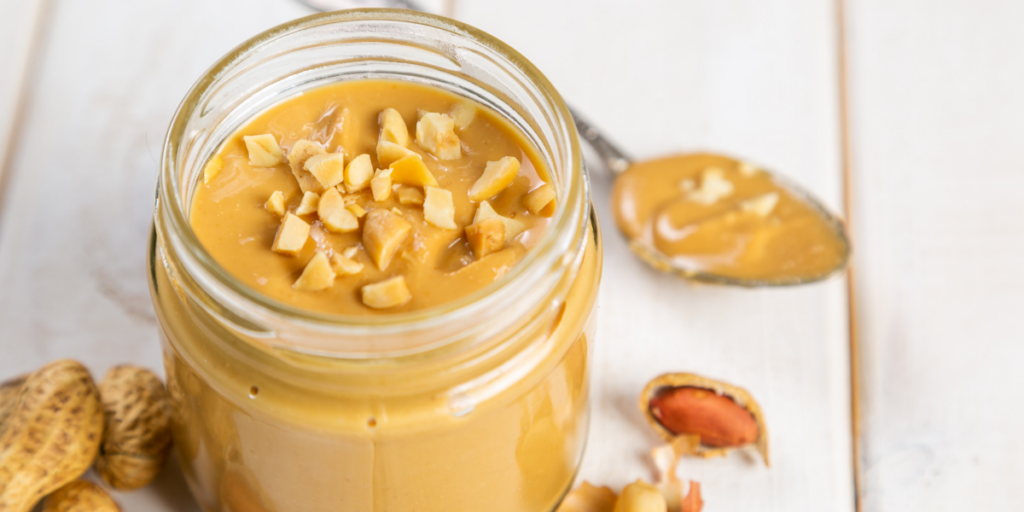No products in the cart.
9 Best Foods to Gain Muscle and Bulk Up

The purpose of increasing your calorie intake is typically to increase weight, gain muscle mass, and/or help maintain weight for those who expend a large amount of calories through exercise.
“Bulking” is the concept of increasing calorie intake to increase weight, in hopes of what will primarily lean muscle mass. However, some bulking meal plans embrace the idea of increasing calorie intake by consuming whatever food is in sight… from candy to buffet lines to protein shakes after every meal. This way of bulking may lead to the goal of weight gain, but unfortunately this method may lead to primarily fat gain instead of muscle gain due to the consumption of calorie-dense, not nutrient-dense foods.
A smart bulking and muscle gain meal plan focuses on “nutrient-dense” foods, which are foods that provide high quality nutrients (vitamins, minerals, energy). This smart method of bulking provides larger portions of complex carbohydrates, lean proteins, and healthy fats, and eating every 2-3 hours. A major goal of this high-calorie meal plan is to increase the nutrient-density of foods per meal without actually adding a lot of extra food.1 Therefore, high-calorie, nutrient-dense food exchanges are very important.
Here are the 9 best foods to bulk up and to gain muscle:
Best Foods to Gain Muscle and Bulk Up
Peanut Butter
Peanut butter is a great nutrient-dense food and healthy fat source that provides about 200 calories per 2 tablespoons. Choose a natural peanut butter for less saturated fats, oils, and sugars. Add 2 tablespoons of peanut butter to your toast, bagels, waffles, oatmeal, or smoothies.
Trail Mix
Trail mix is an extremely nutrient-dense food exchange because it includes nuts (high in healthy fat) and dried fruit (high in carbohydrates). A handful of trail mix is about 150 calories, so it’s easy to get a lot of calories in without actually eating a large amount of food. Add trail mix to cereals, yogurt, oatmeal, ice cream, or put it in a bag as a snack.
Avocado
Avocado is a delicious healthy fat source that packs a lot of taste and calories in a small amount. A half of an avocado is about 150 calories and a tasty topping to any dish. Add avocado to salads, sandwiches, wraps, burgers, or as a snack with lemon squeezed on top.
Whole or Reduced Fat Dairy Products
Whole and reduced-fat dairy products provide lots of calories with lots of nutrients (including, Protein, Calcium, Vitamin B-12, Riboflavin, Phosphorous, Vitamin D). Avoid skim dairy products, as these have been stripped of all their fat leaving a reduced mount of calories. Have a cup (8-oz) of whole (~150 calories) or reduced fat (~120 calories) dairy products (milk, yogurt, cottage cheese) to make smoothies, protein shakes, oatmeal, cereal, or have a glass with a meal.
Olive Oil
Olive oil is known as one of the healthiest fats due to its composition as a mono-unsaturated fat, which is may help lower risk of heart disease and total cholesterol. This healthy fat source provides a whopping 250 calories in 2 tablespoons. Use extra virgin olive oil when preparing vegetables, meats, and homemade dressings or sauces.
Lean Cuts of Red Meat
In addition to healthy fats, you should also include a quality carbohydrate and lean protein with every meal and snack. Lean red meat is a great source of protein with less saturated fat. A 6-oz lean steak is about 300 calories. Enjoy a lean cut of red meat as a burger, pasta Bolognese, or simply with a baked potato and vegetables.
Whole-Wheat Bagels
A whole-wheat bagel serves as a high quality carbohydrate by proving the calories and energy to keep you going. Next time you make a sandwich, use bagels instead of regular bread or thin wraps for easy added calories. One whole-wheat bagel is about 300 calories versus two pieces of whole-wheat bread only at 120 calories. Try a whole-wheat bagel as the base for an egg sandwich, turkey sandwich, PB&J, or on its own with cream cheese.
100% Juice
100% juice is a simple way to get in extra calories without much work. One cup of 100% juice can add 150 calories, without any extra or added sugar- just make sure to check the label for “100%” or the ingredient list for any added sugar. Have a glass of 100& juice with your lunch or add it into your blender for a high-calorie smoothie.
Pasta
Pasta is a great high quality carbohydrate to serve as the base of any meal. One cup of cooked pasta is about 250 calories. So, add 2-3 cups of cooked pasta to a plate and serve it with a lean protein and healthy fat to complete any meal.
Although the goal is to gain or maintain weight with a high-calorie meal plan, try to eat quality nutrients the majority of the time by focusing on complex carbohydrates, lean proteins, and healthy fats. Try to limit fried foods, processed foods, sugary or packaged pastries, and alcohol, which all add calories without much nutrients. These are all examples of “calorie-dense” but not “nutrient-dense” foods. Also, try to limit low-calorie foods, such as low-calorie cereals (<150 calories/serving), low-fat granola bars, low-calories crackers, skim milk, fat-free foods, and sugar-free foods.1
If you are looking for ways to gain weight, add muscles, or maintain your weight due to large amounts of exercise, add some of the 9 best foods for bulking and muscle gain. This list includes a variety of nutrient-dense foods that provide a high amount of healthy calories in a small volume. By choosing these nutrient-dense foods, you can easily increase your calorie intake with healthy choices that can help add weight and lean muscle mass.
Resources
1. Academy of Nutrition and Dietetics. “Weight Gain for Athletes.” Sports Nutrition Care Manual. Web Accessed. 21 Mar 2017.
